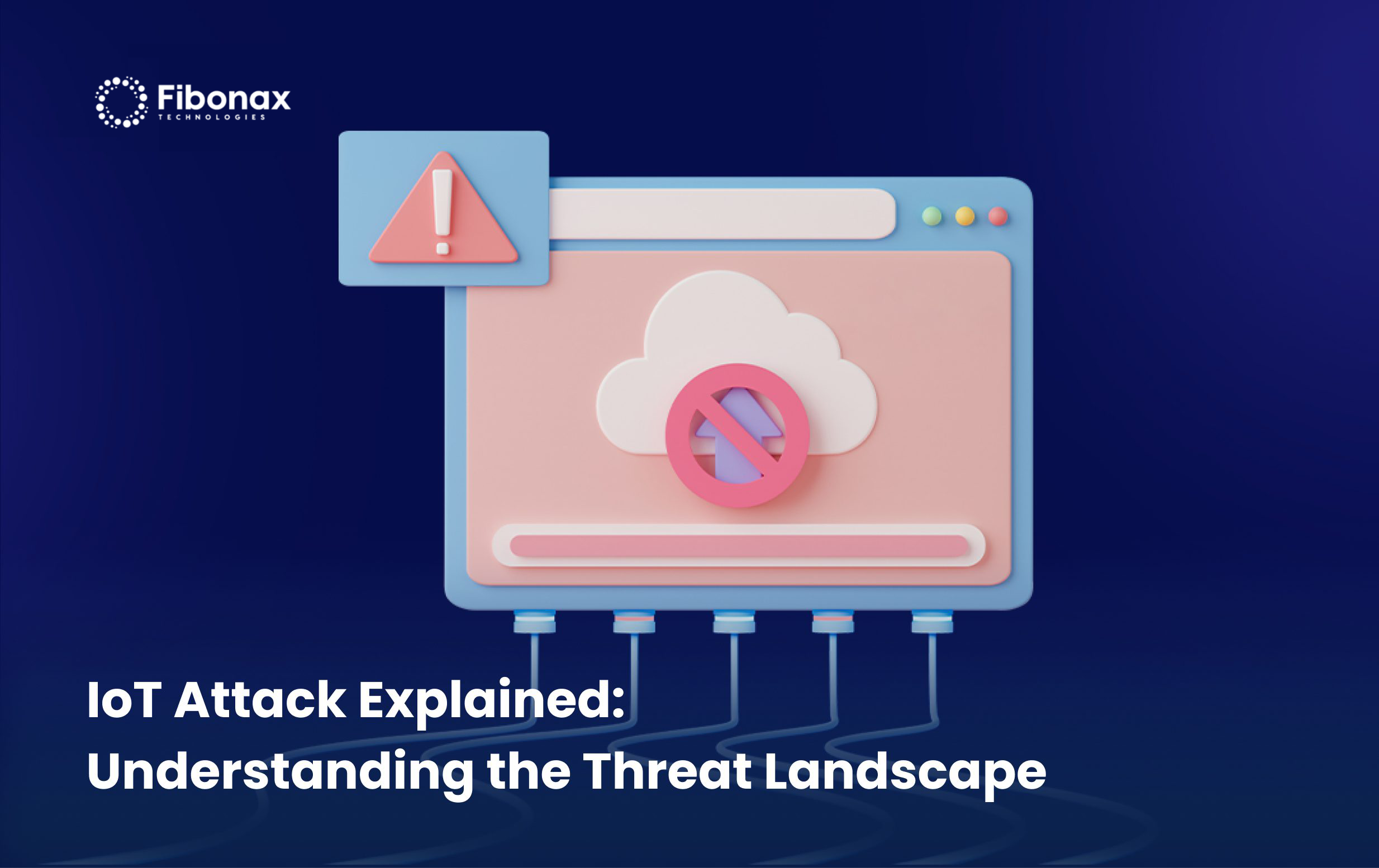Blogs, IOT | 10.08.2021
IoT Attack Explained: Understanding the Threat Landscape

The development of technology allows us to connect with different smart devices every day, such as TV, cars, lighting systems, and other wireless communication networks. All of these things mentioned above are called the Internet of Things (IoT). However, the rapid rise of IoTs also comes with many problems, and one of the biggest issues is IoT attack. In this blog, we will discuss common IoT cyber attacks and how to protect your IoT devices.
1. The Most Common IoT Attack Risks
What are IoT attacks? IoT attacks refer to the various methods and techniques used by malicious actors to compromise the security of Internet of Things (IoT) devices and networks. These attacks exploit vulnerabilities in IoT devices, networks, or the communication protocols they use, with the aim of gaining unauthorized access, stealing sensitive information, disrupting operations, or manipulating connected systems
a. Botnets
Botnets pose one of the most common security risks in today’s digital landscape. These malicious networks consist of a large number of compromised computers, known as “bots” or “zombies,” controlled remotely by a central command. Botnets can be used for various nefarious activities, including distributed denial-of-service DDoS attacks, spam email campaigns, data theft, and spreading malware. Their sheer size and ability to coordinate attacks make them a significant threat to individuals, businesses, and even critical infrastructure.
To protect against botnet attacks, it is crucial to maintain up-to-date security measures, including robust firewalls, intrusion detection systems, and regular security audits. Additionally, user education, strong passwords, and prompt software updates play essential roles in mitigating the risks associated with botnets. By staying vigilant and proactive, individuals and organizations can help safeguard their systems and data from the pervasive threat of botnets.
b. Ransomware
Ransomware encrypts a victim’s data and holds it hostage until a ransom is paid, often in cryptocurrency. Ransomware attacks can occur through various means, such as phishing emails, malicious downloads, or exploiting vulnerabilities in software. The consequences of a successful ransomware attack can be devastating, leading to data loss, financial damages, and significant disruption to businesses and individuals.
To mitigate the risk of ransomware, it is crucial to implement robust cybersecurity measures, including regular data backups, strong and unique passwords, up-to-date antivirus software, and user awareness training to detect and avoid phishing attempts. Organizations should also consider network segmentation and proactive vulnerability management to minimize the impact of potential attacks. By taking proactive steps and maintaining a strong security posture, individuals and businesses can better protect themselves against the ever-evolving threat of ransomware.
c. Physical Security and Tampering
Physical security and tampering are among the most common IoT Security Threats. These risks arise from the vulnerabilities that come with physical access to IoT devices. Unlike traditional computing devices, IoT devices are often dispersed across various locations, making them more susceptible to physical manipulation and unauthorized access. Tampering with IoT devices can lead to severe consequences, such as unauthorized control, data breaches, privacy violations, and even physical harm. Furthermore, compromised IoT devices can be used as entry points to access broader networks or exploit vulnerabilities in interconnected systems.

Given the increasing adoption of IoT devices in various sectors, ensuring robust physical security measures becomes crucial to protect the integrity and confidentiality of these devices and the data they process. Organizations must prioritize physical security alongside other cybersecurity measures to mitigate the risks associated with tampering and safeguard the IoT ecosystem as a whole.
d. Brute-force Password Attacks
Brute-force password attacks have emerged as one of the most prevalent security risks in the realm of IoT (Internet of Things) devices. With the proliferation of interconnected devices, weak or default passwords become prime targets for hackers seeking unauthorized access. Brute-force attacks involve systematically attempting various combinations of usernames and passwords until the correct credentials are discovered. IoT devices, especially those with limited computing power or weak security mechanisms, are particularly vulnerable to these attacks. Once compromised, attackers can gain control over the device, manipulate its functions, or exploit it as a gateway to infiltrate larger networks.
To mitigate the risks associated with brute-force password attacks, it is essential to employ strong, unique passwords, enable multi-factor authentication, and implement mechanisms to detect and respond to suspicious login attempts. Additionally, ongoing user education and awareness about password security practices are vital in ensuring the protection of IoT devices and the networks they connect to. By addressing the vulnerabilities posed by brute-force attacks, organizations can significantly enhance the security posture of their IoT deployments.
2. Minimizing IoT Attack Risks
So, how to protect against IoT attacks? There’s no perfect way to avoid that but we can minimize the risks of being cyber-attacks. Minimizing IoT security attack risks requires a comprehensive approach that encompasses various strategies and practices. Here are three key ideas to consider:
a. Implement Strong Authentication and Access Controls
Implementing robust authentication and access controls is one effective way to minimize IoT security attack risks. This includes using strong and unique passwords, enabling two-factor or multi-factor authentication, and employing secure protocols for device authentication. Additionally, access privileges should be carefully managed, granting only the necessary permissions to users and devices. Regularly reviewing and updating access controls helps prevent unauthorized access and reduces the risk of malicious activities.

3. Final Thoughts
In conclusion, IoT Security Attacks have become increasingly prevalent, with numerous high-profile incidents highlighting the urgent need to address IoT Security Threats. As the number of interconnected devices continues to rise, organizations must prioritize minimizing these security attack risks. By implementing robust authentication and access controls, regularly updating and patching IoT devices, and implementing network segmentation and monitoring, organizations can significantly enhance their defenses against IoT attacks.
If you have the intention to upgrade your IoT Software Security System to avoid cyber IoT attacks, don’t hesitate to contact Fibonax for a free consultation! With 1000+ experts & 500+ successful projects in various industries including Healthcare, Education, Manufacturing, etc, we’re confident to help you leverage the most cutting-edge technology to ensure the security system.

